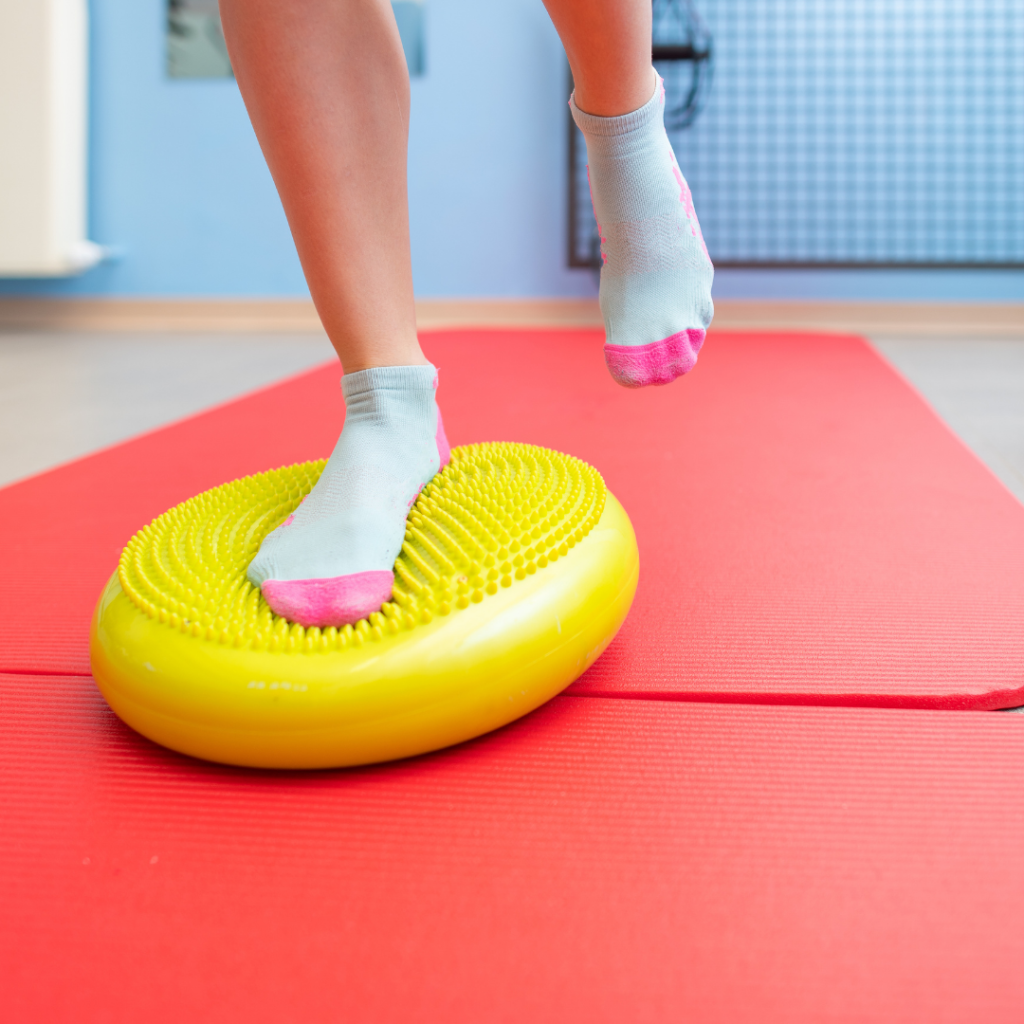- How phase II of ACL recovery begins around the third week after surgery and lasts until week 12, divided into Early, Mid, and Late phases with specific goals for each segment.
- Why the Early Phase II focuses on regaining full knee extension, walking normally, and protecting the repaired ACL, achieved through range of motion, strength, and proprioception exercises.
- What the criteria are to progress to Mid-phase II which can include no swelling, the ability to bend and straighten the operated knee comparable to the strong knee.
As you move forward with your recovery after surgery for an ACL tear, things start to get a little more intense – as expected. The stage of recovery that usually begins in the third week after surgery and lasts until week 12 is known as Phase II.
Phase II is a big deal because it sets you up for success when it comes to making a full recovery. Because this phase is such a long part of the ACL rehabilitation process, it’s best to split it up into three sections: Early, Mid, and Late Phase II.
Each portion of Phase II will have slightly different goals, but they are all connected to one another. Remember how we talked about short-term goals in Part 1? This is where they become important.
This article will lay the groundwork for you to understand more about Phase II ACL rehabilitation after surgery for an ACL tear. First, we’ll explain it all: your goals, exercises (also known as interventions), and criteria to move on. Then, we’ll go into detail on how to perform the different exercises you’ll be doing.
Let’s jump right into the first section, Early phase II.
Early Phase II of ACL Rehabilitation and Recovery
Your only goals during early phase II are to regain full extension of the operated knee, walk normally, and, most importantly, protect your newly-repaired ACL. Yes, these are all baby steps – but they’re some of the most crucial ones you’ll have. The good news is, it shouldn’t take longer than a couple of weeks.
So, how do you achieve these goals? Do this by focusing on the range of motion, strength, and proprioception.
1. Continue to increase your knee range of motion.
Once you’re able to bend your knee about 100 degrees, it’s safe to try the stationary bike. This is a great way to keep working on your range of motion while beginning to get active again. Set the bike up so that the seat hits the top of your hip bone when you’re standing next to it. Start slow and use gentle movements, especially when the pedals reach the 12:00 o’clock position.
Don’t forget to do your daily stretches. The two stretches that are most beneficial to the early phase II goals of ACL recovery are:
- Prone quad stretch – lying on the table, pull your heel to your glutes. You can turn this into a hip flexor stretch as well by having someone lift your quad off the table.
- Standing quad stretch – standing on your unoperated leg, pull the heel of your operated leg to your glutes.
2. Continue with strengthening exercises, particularly those using your body weight.
The exercises you learned in Part 1 are still important in this phase. Continue working on your straight leg raises and hip strength. You can also try to incorporate some of the exercises below. As your strength improves, increase the weight as tolerated or instructed by your physical therapist.
- Step-ups
- Step-ups with marching
- Partial squats
- Goblet squats
- Kettlebell Deadlift
- Ball squats and wall slides (to 60 degrees of knee flexion)
- Core strengthening
- Bridge
- One-legged bridge
- Bridge on an exercise ball
- Sideways hip clamshells
3. Introduce proprioception activities.
Proprioception is the body’s awareness of where it is in space at any given moment. After ACL surgery, proprioception needs to be retrained because it’s so crucial to your lower body stability. This is done by challenging the body with different balancing exercises.
Single leg balance is the number one exercise when it comes to proprioception. Once you’ve mastered that, you can add unsteady surfaces to your routine. Whether it’s a BOSU ball or a foam pad, unsteady surfaces increase the exercise’s level of difficulty. Sideways stepovers should also be incorporated into the early phase of proprioception interventions.
Ok, so you did all of that. How do you know when you can move on to Mid-phase II of ACL recovery?

The criteria to progress includes:
- No swelling – especially not after your knee exercises.
- You should be able to bend your operated knee as much (or within 10 degrees) as the strong knee.
- You should be able to straighten the operated leg as much as the strong leg.
